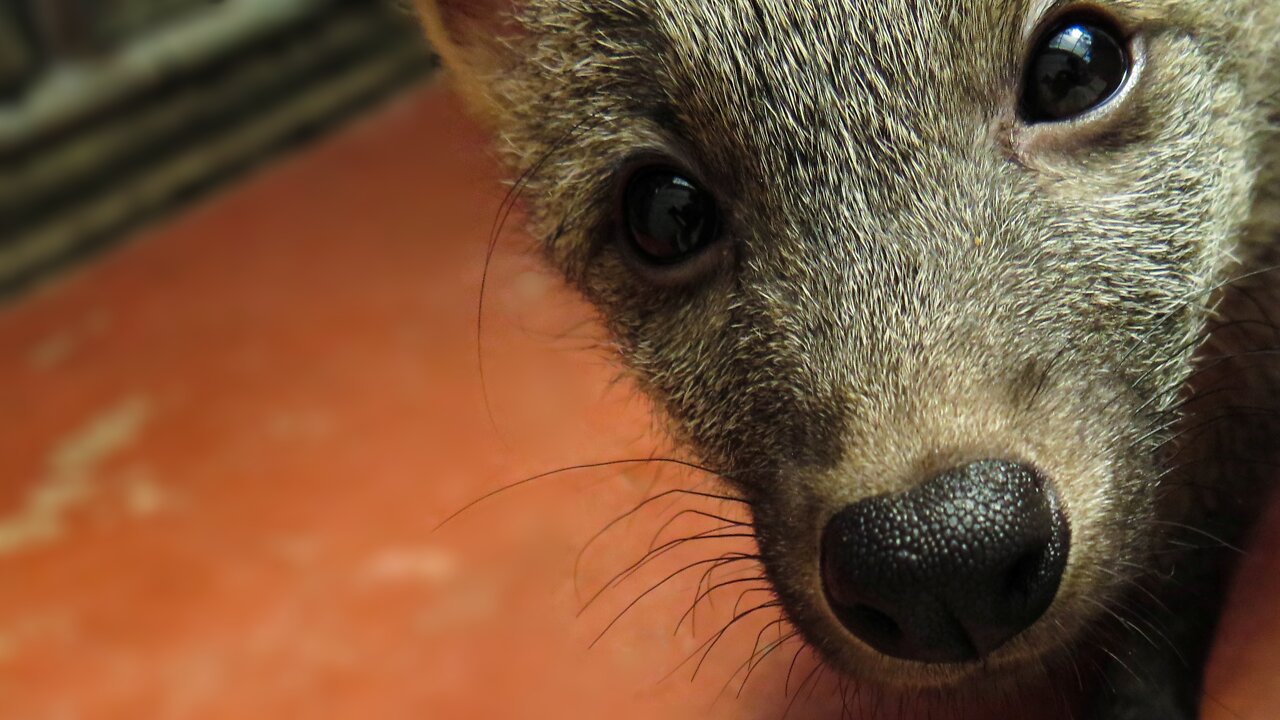Premium Only Content

Adorable rescued Crab-eating Fox pup wants to catch what's making the weird noise
These Crab-eating Fox pups (Cerdocyon thous) have lost their mothers, so they had to be rescued and now live at a Wildlife Refuge. They are wild pups, but pups nonetheless, so they are curious and playful, and this brave one wants to find out what this weird noise is! The pups are still in quarantine, which is why they are not in a proper enclosure yet.
The Crab-eating fox is the sole extant member of the Cerdocyon genus. Although it is called "fox", it doesn't belong to the fox-like tribe Vulpini, but shares the Canini tribe with 21 dog-like species, such as wolves, jackals, coyote, bush dog, wild dog, maned wolf, and the domestic dog, along with some other small canids that are called foxes, such as the Andean Fox, South American Gray Fox, Pampas Fox, Sechuran Fox, and Hoary Fox.
It is mostly endemic to South America, but it has been sighted in Panama since 90s. It can be found in most South American habitats, such as savannas, tropical savannas such as the caatinga, plains, and campo, woodlands, subtropical forests, and prickly, shrubby thickets. It is only absent from rainforests, high mountains, and open grassy savannas, as well as urban areas.
Although, as the name suggests, it feeds on crabs, the Crab-eating Fox is actually an omnivore, and its diet may vary according to location. It is opportunistic, eating insects, rodents, birds, turtle eggs, tortoises, fruit, bird eggs, crustaceans, insects, lizards and carrion. It is an important species for biological control.
The illegal wildlife trade is the third most valuable illicit commerce in the world, losing only to drugs and weapons. That, along with loss of habitat by deforestation, fires, etc., results in an enormous amount of animals in need of rescuing. Only 1 in 10 animals survive trafficking! Do not support the pet trade! Animals should be free!
-
 0:43
0:43
NataliaCara
2 years agoIt's dinner time for this rescued immature Southern Elephant Seal
4281 -
 LIVE
LIVE
Lofi Girl
2 years agoSynthwave Radio 🌌 - beats to chill/game to
376 watching -
 2:19:32
2:19:32
Badlands Media
1 day agoDEFCON ZERO Ep. 005: False Flags, Cyber Fronts & Global Power Plays
146K58 -
 2:35:23
2:35:23
FreshandFit
8 hours agoWhy Black Men Don't Date Black Women Debate
38.6K36 -
 2:03:42
2:03:42
Inverted World Live
11 hours agoBigfoot Corpse Coming to the NY State Fair | Ep. 94
108K26 -
 6:16:23
6:16:23
SpartakusLIVE
12 hours ago$1,000 Pistol Challenge || #1 ENTERTAINER of The EONS Eradicates BOREDOM
85.1K2 -
 2:33:37
2:33:37
TimcastIRL
10 hours agoTrump Orders Review of Smithsonian For Being Woke & Out of Control | Timcast IRL
188K78 -
 3:09:10
3:09:10
Barry Cunningham
13 hours agoPRESIDENT TRUMP HAS TAKEN THE MONSTER AWAY FROM THE LEFT! HORROR STORIES WON'T WORK ANYMORE!
84.2K81 -
 1:29:55
1:29:55
WickedVirtue
7 hours agoLate Night Fortnite w/ Friends
52.9K -
 3:34:06
3:34:06
This is the Ray Gaming
8 hours ago $1.54 earnedCould you be? Would you be? Won't you be my RAYBOR? | Rumble Premium Creator
32.3K